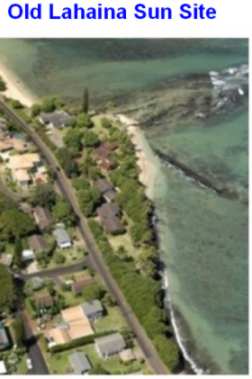West Maui Sugar Cane
A Very Sweet Story

Maui Sugar Cane
Over the West Maui sugar cane plantations, thick clouds of smoke billow high above Lahaina. From a distance, a stranger might think the town is burning to the ground.
But anyone in Hawaii for more than a few days knows better. It's only a sugar cane fire -burning to remove trash and leaves from the cane; burning to prepare the cane for the trip to the mill and the refinery and the breakfast table; burning where cane has been cultivated for 111 years.
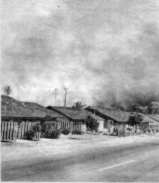
Sugar cane burning is only the most dramatic event in the plant's history from birth through growth, harvesting, processing and eventual refining into that dangerous, delightful substance known as white granulated sugar.
It's a -history full of hard working men and women, sophisticated scientific know-how, and millions of dollars worth of complex machinery. It's a history that, in West Maui alone, provides employment for some 600 persons, and in the 70’s sustains an industry that still contributes more to Maui's economy than the burgeoning tourist trade.
Cane from the 9,400 acres of cultivated cane land in West Maui is loaded on huge $75,000 hauler trucks for the trip to the Pioneer Mill in Lahaina. At the mill, one side of a chain netting resting at the bottom of the truck bed is hoisted high, spilling 42 tons of field cane out of the truck and on to an automatic conveyor.
As quickly as 20 minutes later, the Maui sugar cane automatically has been washed (some seven: million gallons of wash water are needed every day), cut into short pieces, battered into pulp and is on its way into an immense round, machine which leeches the sugar from the plant material.
The big machine, known as a Silver diffuser is a sort of industrial merry-go-round. The diffuser, shaped like a huge drum and measuring more than 50 feet in diameter, houses a stainless: steel metal bed onto which the prepared cane is dumped.
The metal bed- revolves slowly -- about once every 40 minutes -- as the cane is subjected to 18 separate washings which remove more than 98 per cent of the sugar.
The leftover plant material -- known a bagasse -- is dried and later burned in the mill’s boiler plant, which operates Pioneer Mill's electric generators.
The sugar-rich water from. the diffuser is pumped into the mill, where impurities are dropped out by settling and water remove by evaporation.
What's left is a sugar syrup which is pumped into big tanks, where the syrup is boiled under a partial vacuum. A sugar culture -- sort of a sourdough starter for sugar -- is dropped into the tank, causing crystallization of the sugar.
The material then goes into a centrifuge which separates the crystallized sugar from the by-product of the process, molasses.
Most of the molasses from Maui sugar cane is used in cattle feed. The tan-colored crystallized sugar -- known as raw sugar -- is trucked to Kahului and then shipped to the C&H refinery in California.
Maui sugar cane is big business. They use big numbers at the mil in Lahaina: last year, the mill harvested 609,000 tons of field cane which weighed in at 472,000 tons after cleaning and provided some 58,000 tons of raw sugar and 17,000 tons of molasses.
(A first-hand look at the processing of sugar cane is available through free tours offered Tuesday and Thursday by the HC&S mill at Puunene, Maui. Reservations for the one-hour tours are available by calling 877-0081. Tours of the Pioneer Mill in Lahaina are not provided.)
While the process of removing sugar from the Maui sugar cane continues at the mill, another side to the company's operations is taking place out of doors, where thousands of acres of cane are going through a strictly controlled two-year growth process.
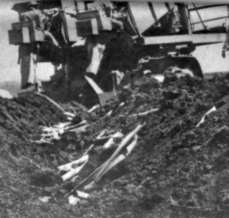
A new field begins with the planting of short sections of young cane, each with three “eyes”, or buds, which grow into new cane plants. These seed pieces are dumped from large planting machines into furrows in the ground, and covered with soil.
Over the next two years, the cane is carefully nurtured. Irrigation of the fields requires an incredible total of some 100 million gallons of water per day. The result of Hawaii’s advanced and exacting cultivation methods is an average cane yield of almost 13 tons per acre.
Each field is planted with new cane seedlings only once every eight years. After the first two year crop is harvested, the old stalks and root systems are permitted to sprout again. This resprouting -- or ratooning -- usually is repeated two more times before the field is plowed under completely and planted again with new seedlings.
When a field reaches maturity, the cane is set on fire to get rid of the tons of unwanted vegetation that have accumulated on the cane over the previous two years.
Round-the-clock crews operating cranes and trucks move in immediately to remove- the burned cane to the mill). Motorists who pass a field full of tall ripe cane one day will drive by a day or two later and find it completely bare.
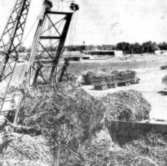
By this time, the cane is at the mill and well into the sugar processing cycle. And within three weeks, the empty field will be sprouting new cane.
This story by Don Graydon was published in The Lahaina Sun in 1971.
To Go To Sugar- Click Here
To Go To Maui Pioneer Mill-Click Here
To Go To Sugar Cane Burning-Click Here
To Go To Jack London Haleakala-Click Here
To Go To Lahaina Petting Zoo-Click Here
To Go To Papaya Trees-Click Here
To Go To Maui Dogs-Click Here
To Go To Contact-Click Here
Maui Lahaina Sun

Buck Quayle at the Maui Lahaina Sun bureau circa 1970
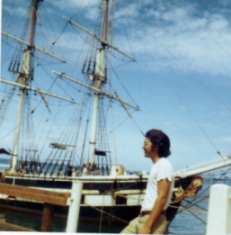
Reporter/Photographer Buck Quayle in 1971 in Maui with the Cartagenian in the background
Buck Quayle, 2011
Hawaii
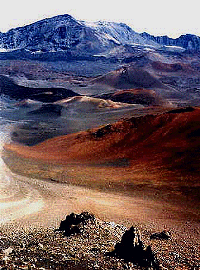
Another Day At The Office Haleakala National Park
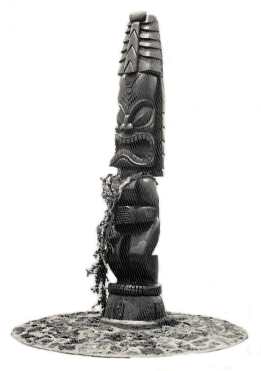
Tiki
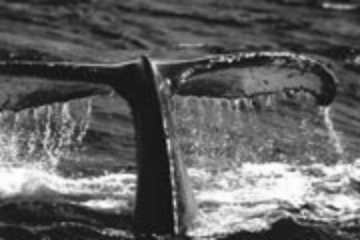
Whale tail
